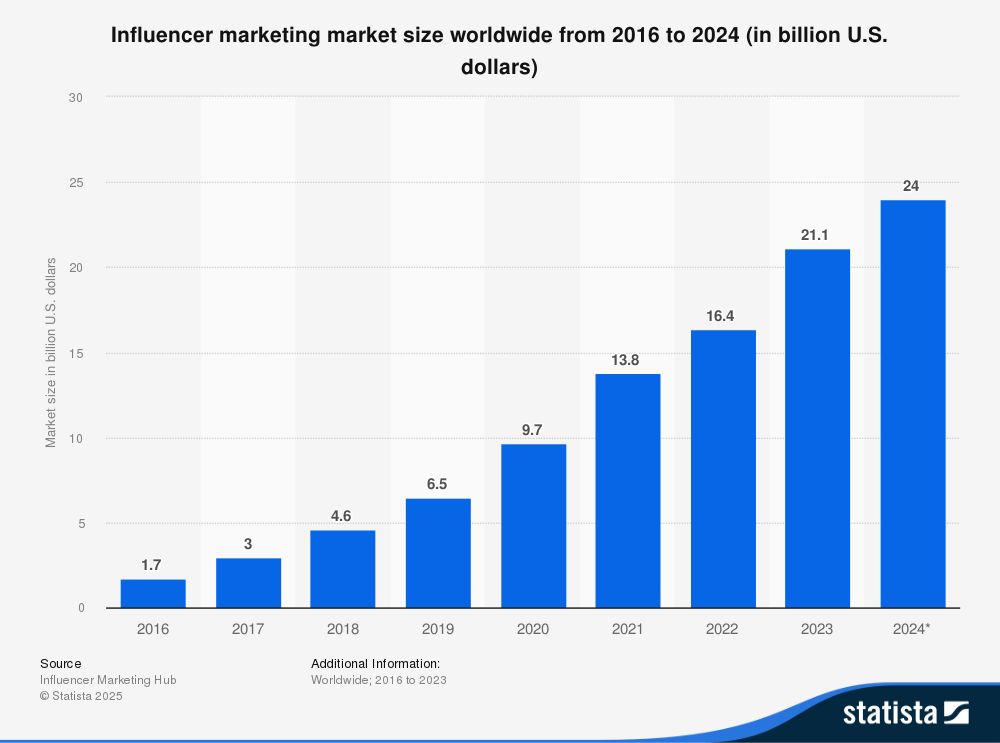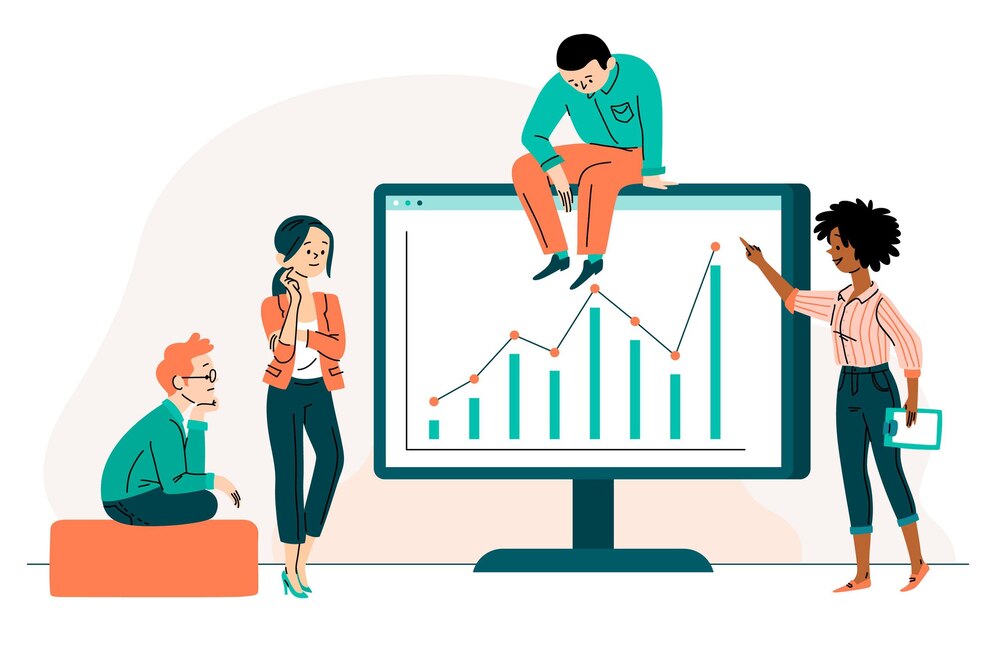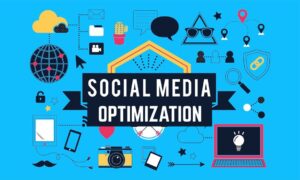In 2025, influencer marketing isn’t just a buzzword—it’s a $39 billion industry projected to grow by 10% year-over-year as brands prioritize authenticity, niche audiences, and measurable ROI. With platforms like TikTok and Instagram evolving into social commerce powerhouses and AI reshaping content creation, staying ahead requires a deep understanding of viral trends and best practices. This article has the latest data, highlights 2025’s key influencer marketing trends, and provides strategies to craft campaigns that resonate, convert, and scale.
1. Influencer Marketing Trends Dominating 2025
1.1 The Micro-Influencer Revolution
Micro-influencers (10k–100k followers) and nano-influencers (1k–10k followers) are stealing the spotlight. Their hyper-engaged audiences deliver 6x higher engagement rates than celebrity influencers, with campaigns costing 200x less. For example, John Deere partnered with Paul Jameson, a lawn care podcast host with 19k subscribers, to drive targeted engagement at trade shows—a move that blended authenticity with niche expertise.
Why it works:
- Trust: 70% of Gen Z consumers trust micro-influencers over traditional ads.
- Cost efficiency: Nano-influencers charge $450 per 10k followers, making them ideal for small budgets.
1.2 TikTok’s Social Commerce Surge
TikTok Shop is redefining e-commerce, with live shopping events projected to account for 20% of all online sales by 2026. Brands like Walkers Crisps partnered with TikTok creators to launch the Temp Drop Shop, a virtual storefront that sold out limited-edition snacks through influencer-led unboxing videos.
Key features driving success:
- Real-time interaction: Live streams blend entertainment with urgency.
- Seamless purchasing: Users buy products without leaving the app.
1.3 LinkedIn’s B2B Creator Boom
LinkedIn’s short-form video feature (replacing Stories) is fueling B2B influencer marketing. Brands like Hootsuite use LinkedIn creators to amplify whitepapers and case studies, shortening B2B sales cycles by 45% through expert-led content.
What to do: Position executives as thought leaders via 60-second “mini-podcasts” to humanize your brand.
1.4 AI as a Campaign Accelerator
AI tools are streamlining influencer discovery, content optimization, and performance tracking. For example:
- Virtual influencers: AI-generated personas like Lil Miquela attract Gen Z audiences.
- Predictive analytics: Platforms like AspireIQ use AI to match brands with creators based on audience demographics.

2. Emerging Niches: Faceless Creators and Niche Communities
2.1 The Rise of Faceless Content
Faceless creators—those who focus on processes (e.g., cooking tutorials) without showing their faces—are thriving. This trend caters to audiences prioritizing privacy and value-driven content. For instance, recipe channels on TikTok garner 3x more saves than personality-driven accounts 1.
Best practices:
- Simplify messaging to highlight product benefits.
- Use humor or storytelling (e.g., stop-motion baking videos) to inject personality.
2.2 Niche Platforms and Subcultures
Platforms like Bluesky and Substack are attracting creators fleeing algorithm changes on Meta and X (formerly Twitter). Over 52% of brands are already active on Bluesky, with Australian marketers leading the charge at 73% adoption.
Case study: Nonprofit organizations use Substack newsletters to partner with macro-influencers, driving 42% higher donation rates through long-form, value-aligned content 10.

3. Measurable KPIs: Moving Beyond Vanity Metrics
3.1 Full-Funnel Metrics
In 2025, brands are shifting from awareness-focused campaigns to full-funnel strategies. TikTok reports that 78% of users discover products via influencers, but the real win lies in tracking conversions.
Essential KPIs:
- Top of funnel: Reach, impressions, engagement rate.
- Mid-funnel: Click-through rates, time spent on content.
- Bottom-funnel: Sales (tracked via UTM links), customer lifetime value.
3.2 Affiliate Marketing’s ROI Revival
Affiliate programs are surging, with brands like Stella Rising using trackable links to attribute 35% of Q1 2025 revenue to influencer partnerships.
Pro tip: Offer tiered commissions to incentivize creators—e.g., 10% for sales, 15% for recurring subscriptions.
4. Best Practices for Influencer Collaborations
4.1 Contract Essentials
A clear contract prevents misunderstandings. Key clauses include:
- Usage rights: Specify where and how long you can repurpose content (e.g., Instagram Reels used in ads for 6 months).
- Exclusivity: Bar influencers from promoting competitors during the campaign.
- Payment terms: Outline deliverables (e.g., 3 posts + 2 Stories) and payment timelines.
4.2 Co-Creation and Authenticity
Involve influencers in ideation. MAC Cosmetics’ Hyper Real Skincare launch partnered with creators like Aysha Harun to design tutorials that felt organic, driving 23% higher engagement than scripted ads.
Steps for success:
- Share mood boards, not rigid scripts.
- Encourage creators to share personal stories (e.g., “Why I switched to your product”).
4.3 Leverage AI for Performance Tracking
Tools like Traackr analyze sentiment and ROI across platforms. For example, Adidas’ SST campaign used AI to identify top-performing content themes, achieving 7.4% engagement rates.

5. Case Studies: Campaigns That Nailed 2025 Trends
5.1 Walkers Crisps x TikTok Shop
PepsiCo’s Temp Drop Shop campaign fused IRL pop-ups with TikTok influencer unboxings, resulting in:
- 10.6M video views in 72 hours.
- 800K engagements via limited-edition snack drops.
5.2 Adidas’ Omnichannel Burst Campaign
By partnering with 40 micro-influencers across Instagram, TikTok, and YouTube, Adidas achieved:
- $10 organic cost per install for its app.
- 46K app downloads in a week.
Winning Strategies for 2025
To thrive in 2025, brands must:
- Prioritize micro-influencers for cost-effective, high-engagement campaigns.
- Embrace TikTok and LinkedIn as commerce and B2B hubs.
- Adopt AI tools to streamline discovery and analytics.
- Focus on full-funnel KPIs, not just likes.
- Build long-term partnerships—73% of marketers say ongoing collaborations yield higher trust and ROI.
By aligning with creators who mirror your values and leveraging data-driven strategies, your brand can cut through the noise and forge meaningful connections in the ever-evolving influencer landscape.


